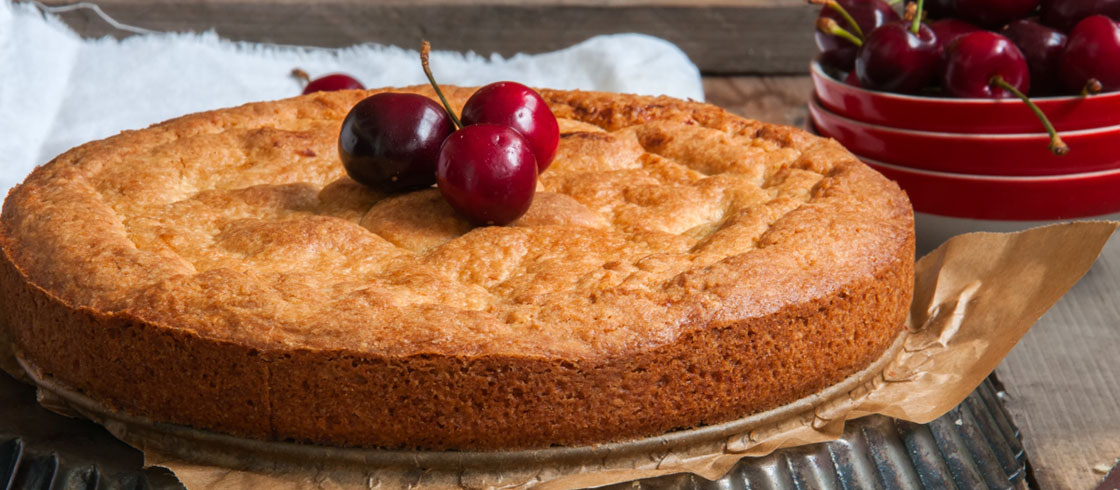The origins of the gâteau basque

The first versions of "biskotxak" the proto-gâteau basque, dating from about 1830, came about in Cambo-les-Bains, a thermal bath resort. The early version of today's gâteau basque are credited to Marianne Hirigoyen, a pastry chef from Cambo who would sell her cakes in the Bayonne markets. Meteorically, the cakes became a huge success, to the point that Hirigoyen was nicknamed "the Basque Cakewoman." She inherited the recipe from her mother, and passed it along to her daughters, Elisabeth and Anne Dibar. The Soeurs Biscotx became the guardians of the cake, selling the traditional goodie in their boutique, la Pâtisserie Marie-Anne.
The real recipe for an artisanal gâteau basque
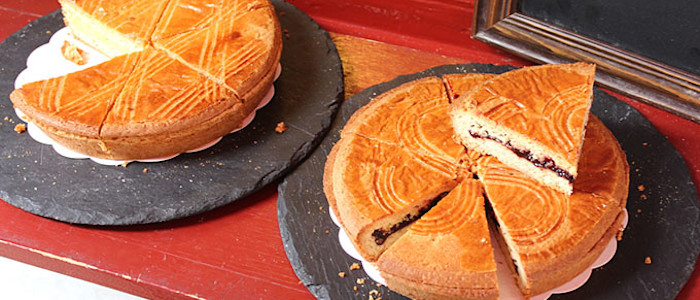
This cake was traditionally eaten en famille after Sunday mass in the Basque Country, however, it's become a staple for all kinds of occasions, from breakfast to dessert. The original recipe is protected by the Eguzkia association, and demands ingredients of quality: buttermilk, flour, eggs, sugar, semolina. It's a very simple recipe, with a complex payoff. Getting the knack of the recipe is a bit more complicated: the crust is both crumbly and fluffly, contrasting the cream or cherry filling. As for the aesthetics, the top is always crosshatched with the back of a fork before it's put in the oven for around 30-40 minutes. The artisanal knowhow, the unique proportions and the filling all combine in an alchemy of flavors so that no two gâteaux are the same.
Gâteau basque: cream or cherry filling?
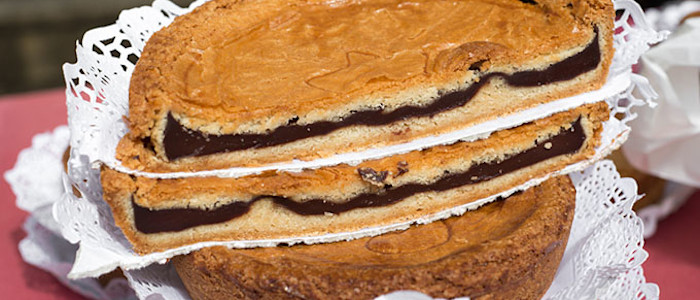
As noted in the Eguzkia Association, pastry cream is the filling of the original recipe. Basque people tend to prefer that, whereas visitors tend to like the black cherry version. But, even in the latter, the cherries must be the Itxassou black variety, an AOP (Appellation d'Origine Protégée) from the Basque region used primarily for jams. While these are the typical versions, other types are possible—the cream can be almond paste, marmalade, or prune, flavored with rum, vanilla, anise or lemon zest.
Eguzkia label: a measure of quality
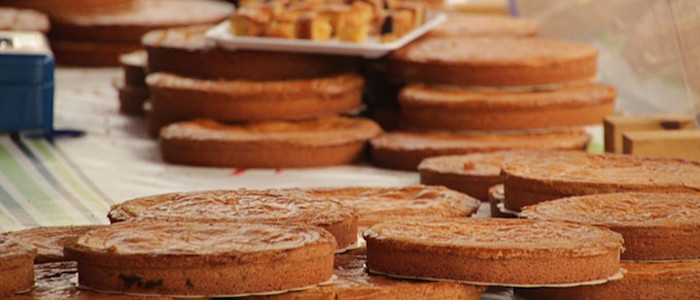
From its inception in 1994, the Eguzkia association has sought to promote a 100% artisinal gâteau basque, developed according its precise specifications. The assocation's objective is to fight against the industrial production of gâteaux basques—and the Basque Country is littered with Eguzkia-approved boulangeries. The label confirms that the bakers prepare the cakes according to tradition, using the proper natural ingrediants, which guarentee the unique flavor. These products are: red-label flour, Charentes-Poitou buttermilk, and a cherry on the cake. A Eguzkia labelled cake is always without preservatives, dyes, or artificial flavorings.
The gâteau basque annual celebration in Cambo-les-Bains
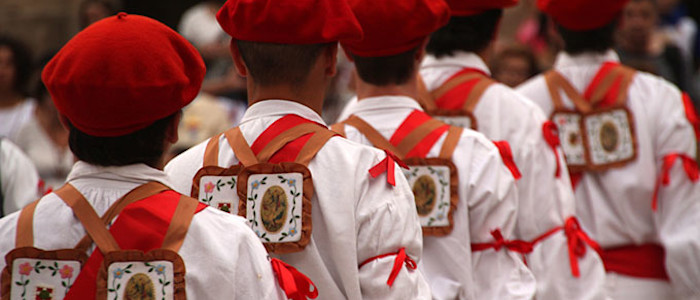
Every year, the gâteau basque is honored in Cambo-les-Bains! The Gâteau Basque Festival, organized by the Eguzkia Association, takes place every year on the first weekend of October, celebrating the tasty treat and Basque culture. Outside of fêting this tasty treat, the festival reassembles culinary brotherhoods around France. Their objective during the festival is to assess the various offerings and labels of quality, and test out local products and producers. More than 3,000 gâteaux basques were sold in the 2019 edition to over 30,000 visitors in one weekend!
Find out more:
- Prepare your trip to the Pays Basque
- Also read: 6 Basque specialties to slip into your suitcase




